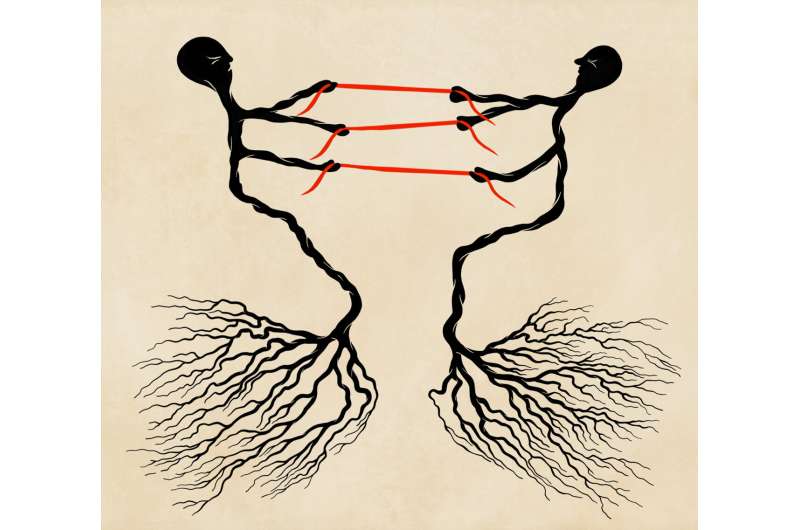This article has been reviewed according to Science X's editorial process and policies. Editors have highlighted the following attributes while ensuring the content's credibility:
fact-checked
peer-reviewed publication
trusted source
proofread
Exploring distributed workload in the fly brain

Recognizing motion requires an enormous amount of computing power from the brain. A new study from Alexander Borst's department at the Max Planck Institute for Biological Intelligence shows how the fly brain masters this task: By performing a neuronal computation on three network levels, it distributes the workload over several steps.
The research was published in Nature Neuroscience.
This is the first time that researchers have deciphered a neuronal network in which one cell type performs the same computation at all network levels. This approach helps fruit flies to reliably recognize different motion patterns—the prerequisite for staying on track.
Fruit flies are masters at detecting motion, and they have to be: even the slightest gust of wind can throw such a small fly off its flight path. To stay on course, flies orient themselves to the optical flow. These are motion patterns that appear on a fly's retina as it moves. Depending on its direction of motion, the patterns differ and tell the fly whether it is moving straight ahead or has turned around a certain axis.
Alexander Borst's department studies motion vision in the fly brain at the level of small circuits. Here, "motion opponency" plays a crucial role. Certain neurons are activated by motion in one direction and inhibited by motion in the opposite direction. In 2015, the researchers made a scientific breakthrough when they discovered so-called LPi cells as the cellular basis for this phenomenon.
Inhibitory function at all network levels
By chance, the researchers now gained even more insights into this network. When Georg Ammer, first author of the study, tested new electrophysiology equipment, he chose LPi cells as "test objects" and was suddenly confronted with completely unexpected measurement results.
To get to the bottom of this observation, the neurobiologist and his colleagues combined various experimental methods, including voltage-sensitive dyes and the analysis of connectome data sets. They found that LPi cells exert their inhibitory function at all network levels. They inhibit not only output cells with opposite preferential directions, but also T4/T5 cells and other LPi cells.
"We were very surprised by this result," Georg Ammer reports. "Up to that point, we didn't know any network in which the same neuronal computation is performed at each level and even by the same cell type."
To the scientists, LPi cells seemed rather inconspicuous at first. Within the network, they contribute only about 5–10% of all synapses. However, electrophysiology experiments showed that these inhibitory synapses are very effective: They are about 10- to 20-fold stronger than activating synapses, so despite being outnumbered, they can cause similar voltage changes.
Keeping output cells responsive
But why is the same computation done in three different places and not just once at the end? The researchers were able to explain this approach, which at first sounds rather cumbersome, with computer models. As the network filters out local noise already at the first two levels, it protects output cells from being overloaded with unimportant information and keeps them responsive to relevant information. This allows output cells to distinguish motion patterns with high sensitivity, even under difficult conditions.
Inhibition between two oppositely tuned channels, as in motion opponency, is a universal principle of neuronal networks. "It could well be that in other species and different brain regions the same computation is distributed across multiple levels and that this principle has great functional importance there as well," Alexander Borst explains. Dividing difficult tasks into smaller bites is thus not only a helpful strategy in our everyday lives—neurons also benefit from this approach.
More information: Ammer, G. et al, Multilevel visual motion opponency in Drosophila, Nature Neuroscience (2023). DOI: 10.1038/s41593-023-01443-z. www.nature.com/articles/s41593-023-01443-z





















